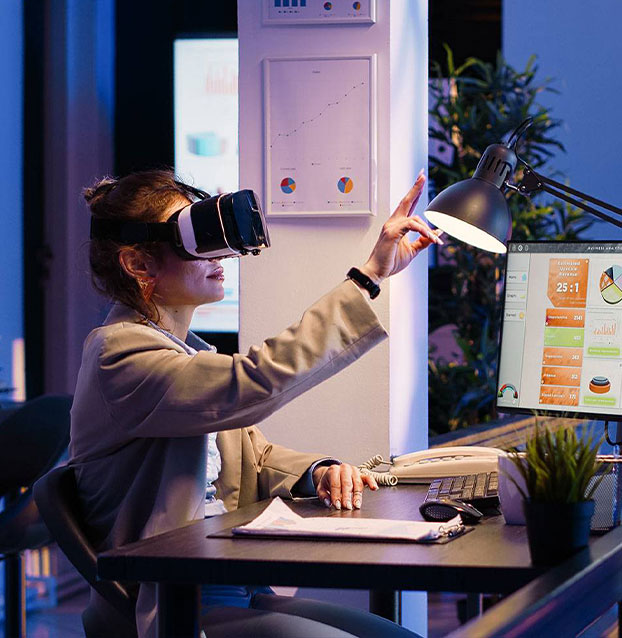
The retail market in India stands as one of the most rapidly expanding sectors globally, showcasing a wide array of products and services.
As of 2024, the Indian retail industry is estimated to be valued at around $950 billion, making it the fourth-largest retail market in the world. Projections suggest that this market could grow to approximately $1.3 trillion by 2025, highlighting significant growth opportunities.
This overview will delve into the current landscape of the retail market, explore key trends, identify challenges, and provide insights into future developments shaping this dynamic sector.
Current Market Size And Growth Forecast.
India’s retail sector has experienced impressive growth over the past decade, with a compound annual growth rate (CAGR) ranging from 9% to 10%. Countless factors contributing to this robust growth are
- Increasing Disposable Incomes: As incomes rise among consumers, there is a corresponding increase in spending on retail goods. The expanding middle class is particularly influential in driving demand for various products.
- Urbanization Trends: A significant shift towards urban living is fueling demand for diverse retail offerings as urban consumers seek convenience and variety.
- Digital Adoption: The rapid growth in internet connectivity and smartphone usage is transforming shopping habits, making it easier for consumers to access products online.
Industry reports indicate that organized retail—which includes modern formats such as supermarkets, hypermarkets, and e-commerce platforms—is expected to increase its market share from approximately 18-20% to about 25-30% by 2025. This shift reflects a growing preference for organized retail channels over traditional, unorganized formats.

Key Segments Of The Retail Market
The Indian retail market shall be categorized into distinct pivotal segments
Food And Grocery
This segment remains the largest contributor to overall retail sales, encompassing fresh produce, packaged foods, beverages, and daily essentials.
Apparel And Footwear
e fashion retail segment is rapidly expanding due to changing consumer preferences and increasing disposable incomes, with consumers seeking both style and quality.
Consumer Electronics
As the middle class continues to grow, there is a rising demand for electronic goods such as smartphones, laptops, and home appliances.
Home Furnishing And Decor
With urbanization on the rise, there is an increasing interest in home improvement products and interior design solutions.
Influential Trends Shaping The Retail Industry
Several key trends are currently influencing the Indian retail landscape
E-commerce Expansion
The e-commerce sector is projected to reach between $120 billion and $140 billion by 2025. The convenience of online shopping combined with a growing number of internet users is driving this growth significantly.
Omnichannel Retailing
Consumers are increasingly favoring a seamless shopping experience that integrates both online and offline channels. Research indicates that around 60-65% of Indian consumers prefer this integrated approach, where they can switch between shopping methods effortlessly.
Quick Commerce
The rise of quick commerce—where products are delivered within hours—has gained significant traction in urban areas. This trend caters to consumers' desire for immediate gratification and convenience.
Sustainability Initiatives
There is a growing awareness among consumers regarding environmental issues. Retailers are responding by adopting sustainable practices and offering eco-friendly product options that align with consumer values.
Regional Insights: Urban vs. Rural Markets
The Indian retail landscape exhibits distinct characteristics across urban and rural areas
Urban Markets.
Urban consumers tend to prefer premium products and modern shopping experiences. The use of digital payments has made online shopping more popular among city residents.
Rural Markets.
The rural sector is becoming a significant area for growth in e-commerce. With rising incomes and changing buying habits, rural households are increasingly purchasing essential goods online.
Challenges Confronting The Retail Sector
Despite its promising growth trajectory, the Indian retail industry faces several challenges.
Supply Chain Disruptions
Global supply chain issues have affected product availability and increased costs for retailers, impacting their profitability.
Inflationary Pressures
Rising prices can constrain consumer spending power, which may lead to reduced sales performance across various segments.
Competition From Unorganized Retail
A substantial portion of India's retail market remains unorganized, presenting challenges for formal retailers trying to capture market share from traditional local shops.
Government Initiatives Supporting Retail Growth
The Indian government is implementing multiple measures to enhance the retail market.
- Foreign Direct Investment (FDI): Policies encouraging FDI in multi-brand retail have opened up opportunities for international players to enter the Indian market, enhancing competition and innovation.
- Infrastructure Development: Investments in logistics and infrastructure aim to improve supply chain efficiency, benefiting retailers across the country by reducing costs and improving delivery times.
Future Outlook For The Retail Market.
Looking ahead, several factors are likely to shape the trajectory of India’s retail market
Technological Advancements
Continued advancements in technology will enhance customer engagement through personalized shopping experiences tailored to individual preferences.
Economic Growth
As India's economy continues to expand, consumer spending is expected to increase further, driving additional growth in the retail sector.
Emphasis On Customer Experience
Retailers will increasingly prioritize enhancing customer experiences through innovative solutions that cater to evolving consumer expectations.
Strategic Recommendations For Retail Stakeholders.
To successfully navigate this evolving landscape, stakeholders within the retail sector should consider implementing the following strategies.
Invest In Technology Solutions
mbracing digital tools can enhance operational efficiency while improving customer engagement through personalized experiences that resonate with modern consumers.
Focus On Sustainability Practices
Adopting eco-friendly practices not only meets growing consumer demand but also strengthens brand loyalty among environmentally conscious shoppers who prioritize sustainability.
Adapt Product Offerings Continuously
Companies should regularly assess consumer preferences and trends to innovate their product lines accordingly, ensuring relevance in an ever-changing market.
Continuously Adapt Product Offerings
Companies should regularly assess consumer preferences and trends to innovate their product lines accordingly, ensuring they remain relevant in an ever-changing market.
The Indian retail market is poised for substantial growth as it adapts to changing consumer preferences and technological advancements. With projections indicating a potential value nearing $1.3 trillion by 2025, stakeholders must remain agile to capitalize on emerging opportunities while addressing ongoing challenges.
